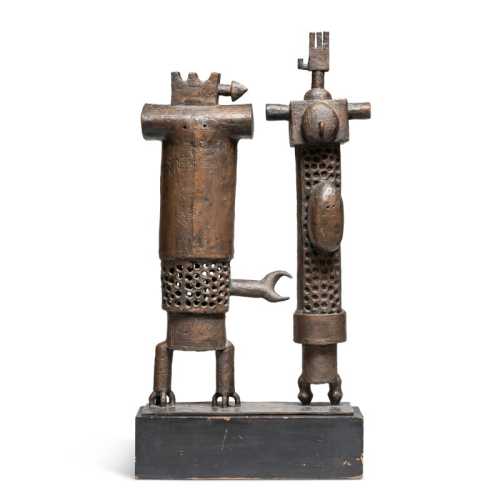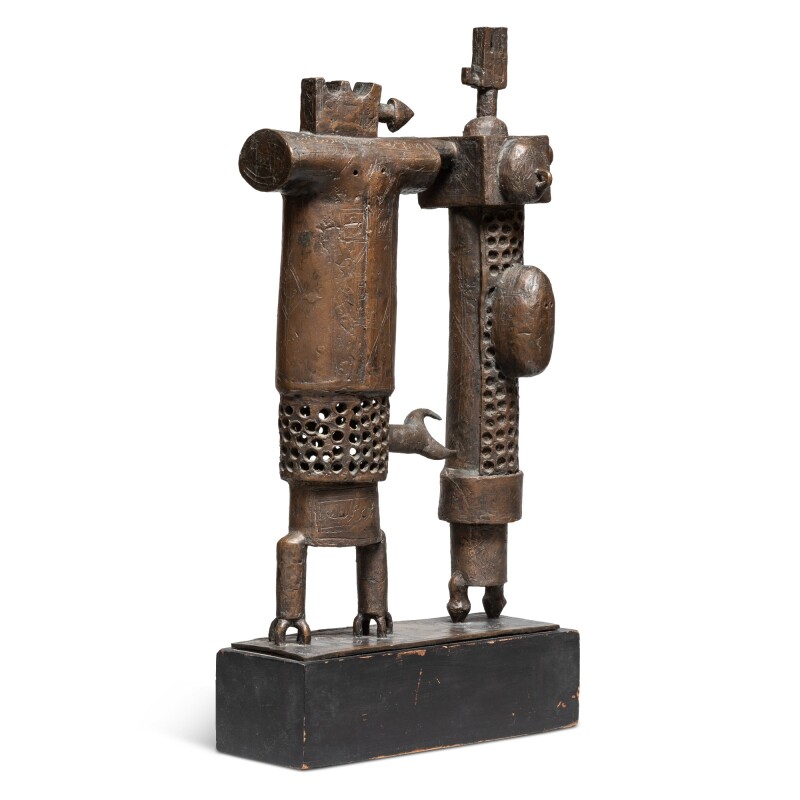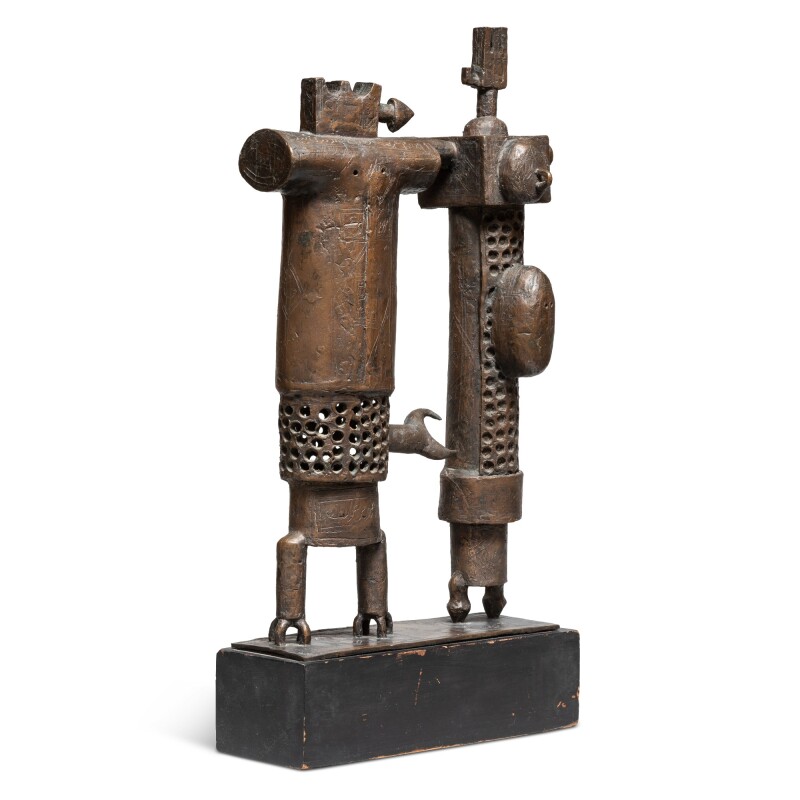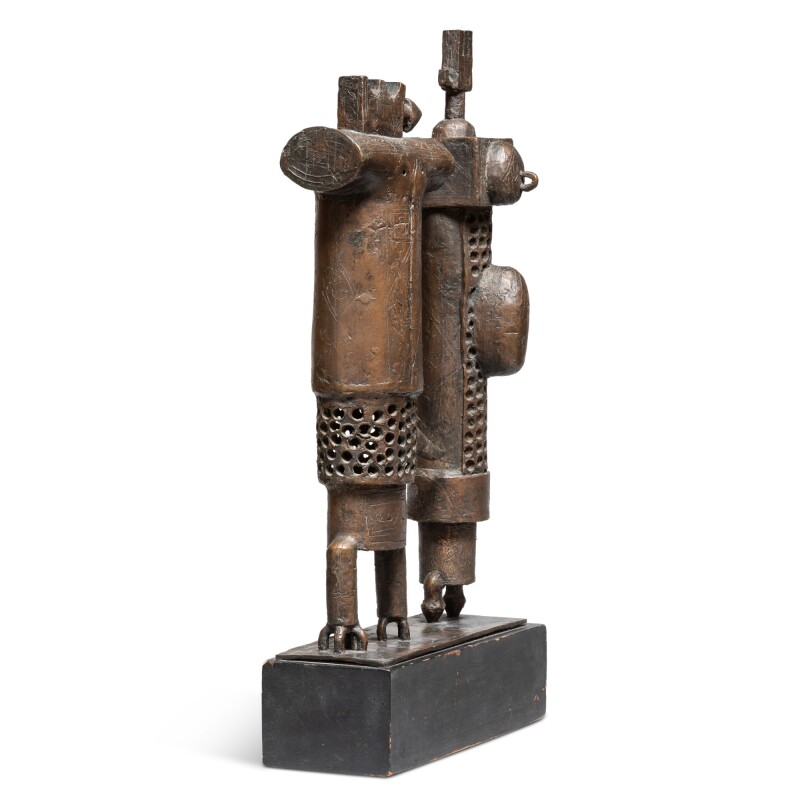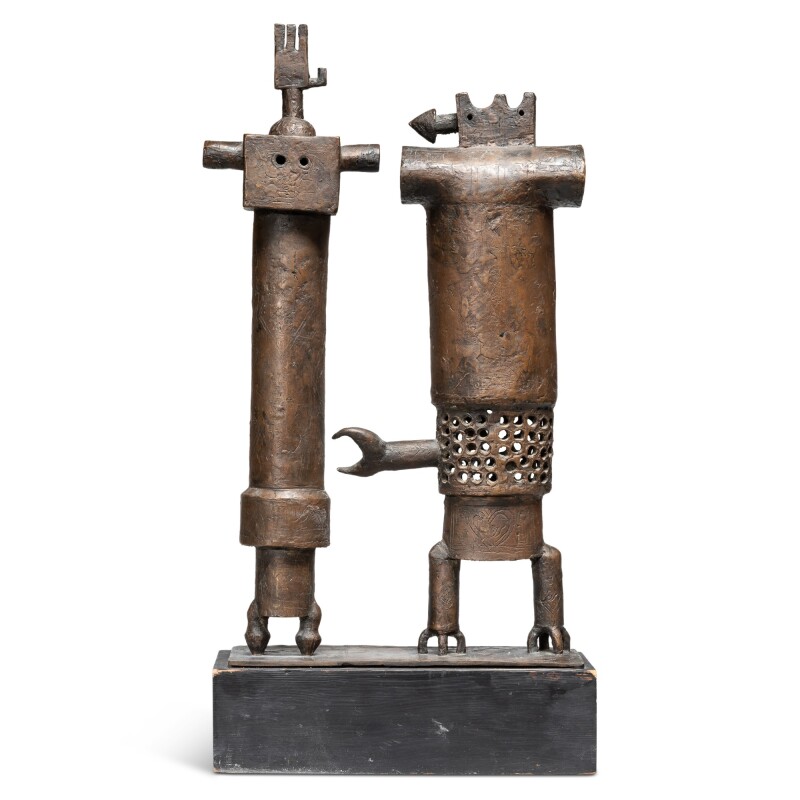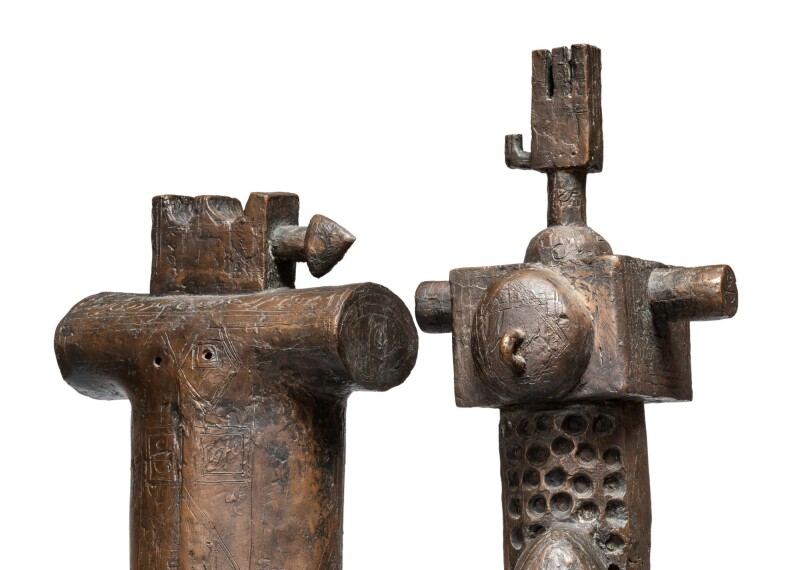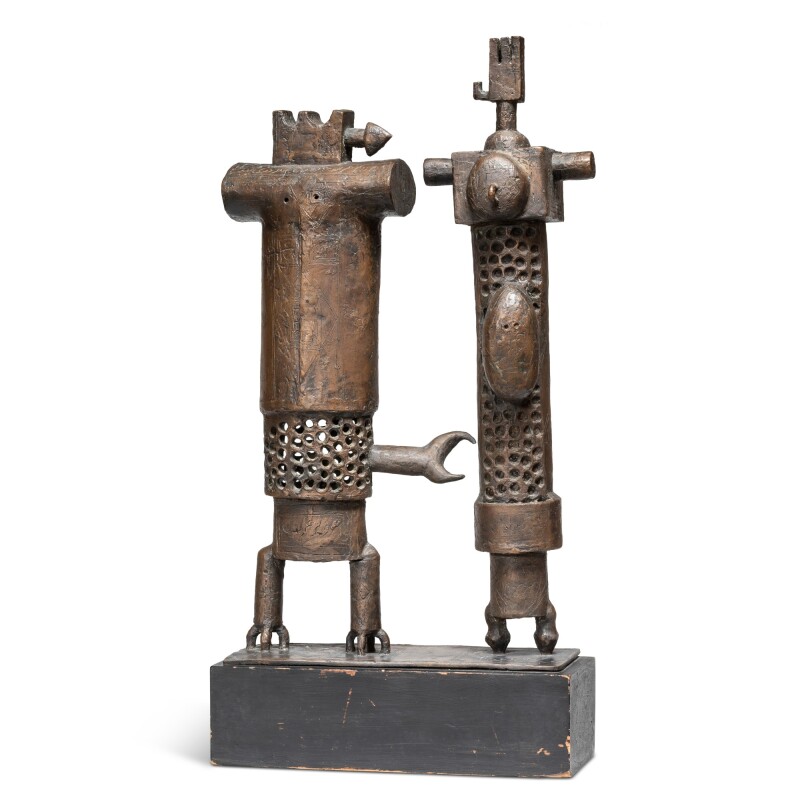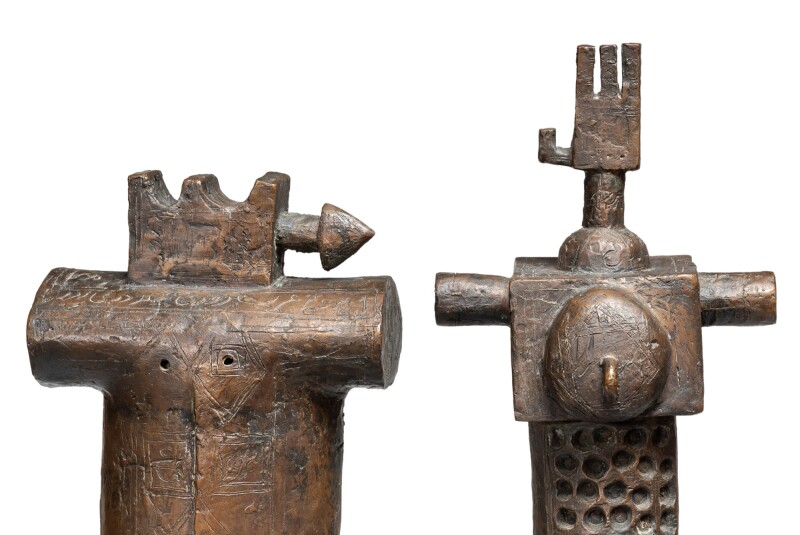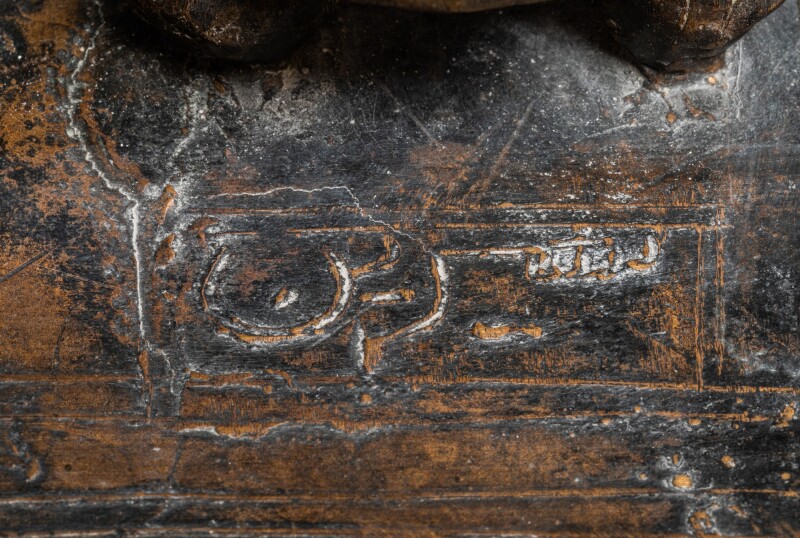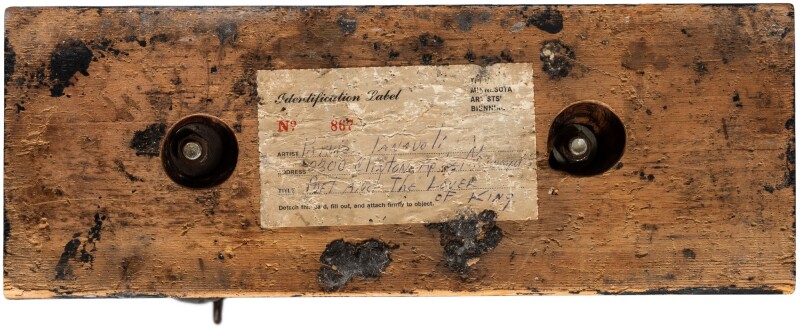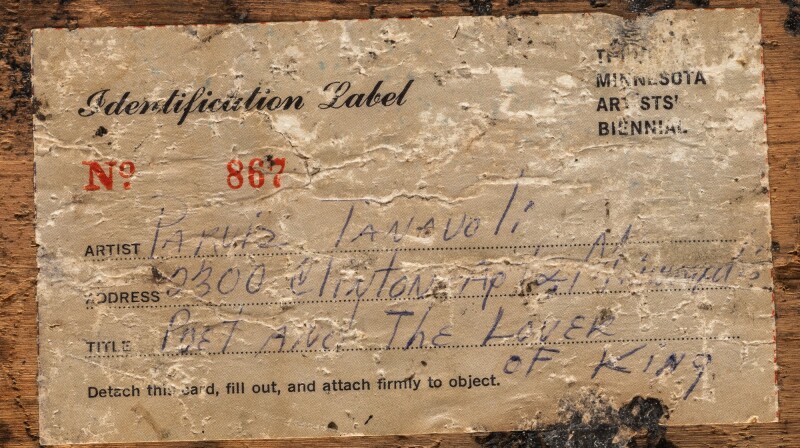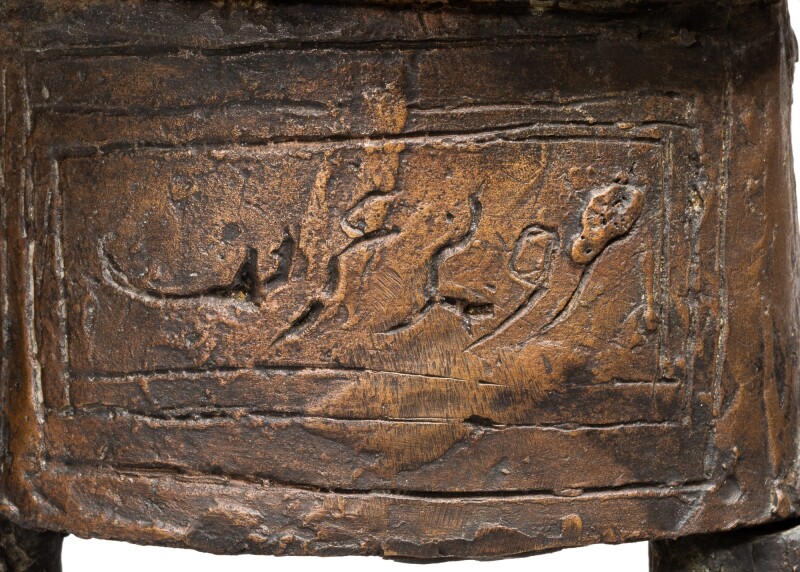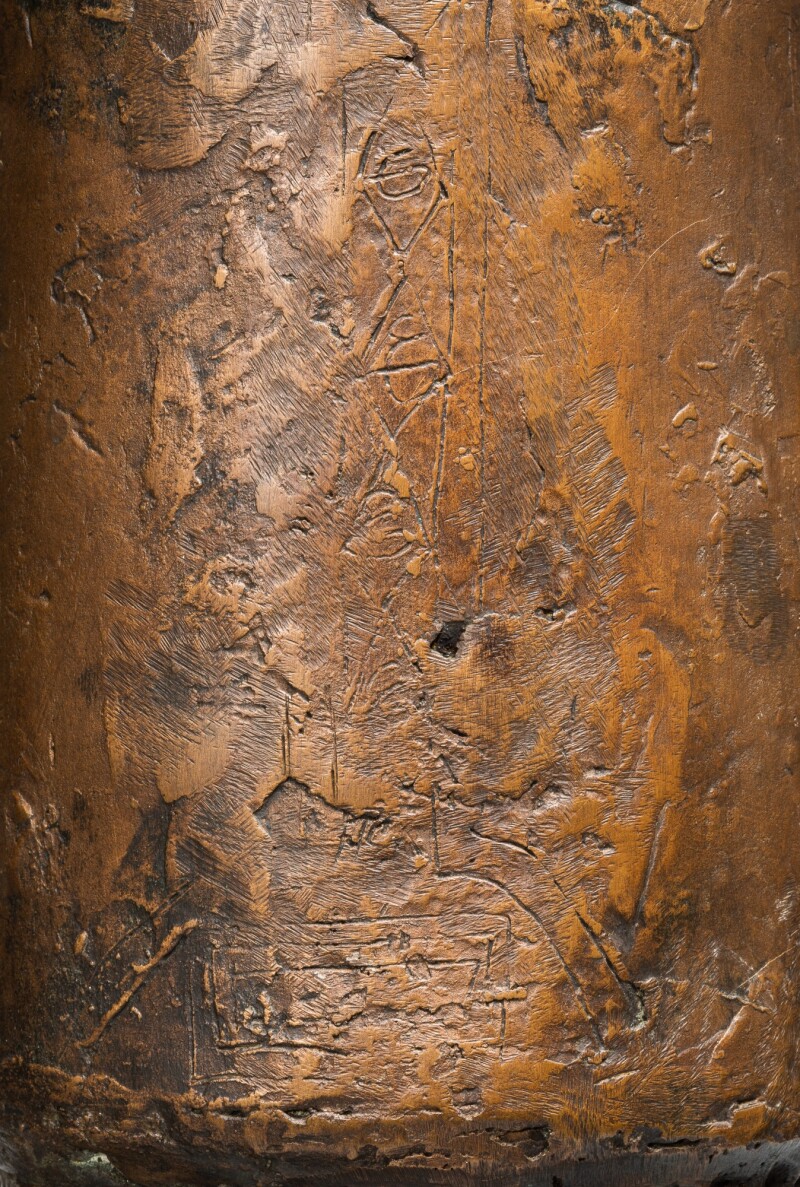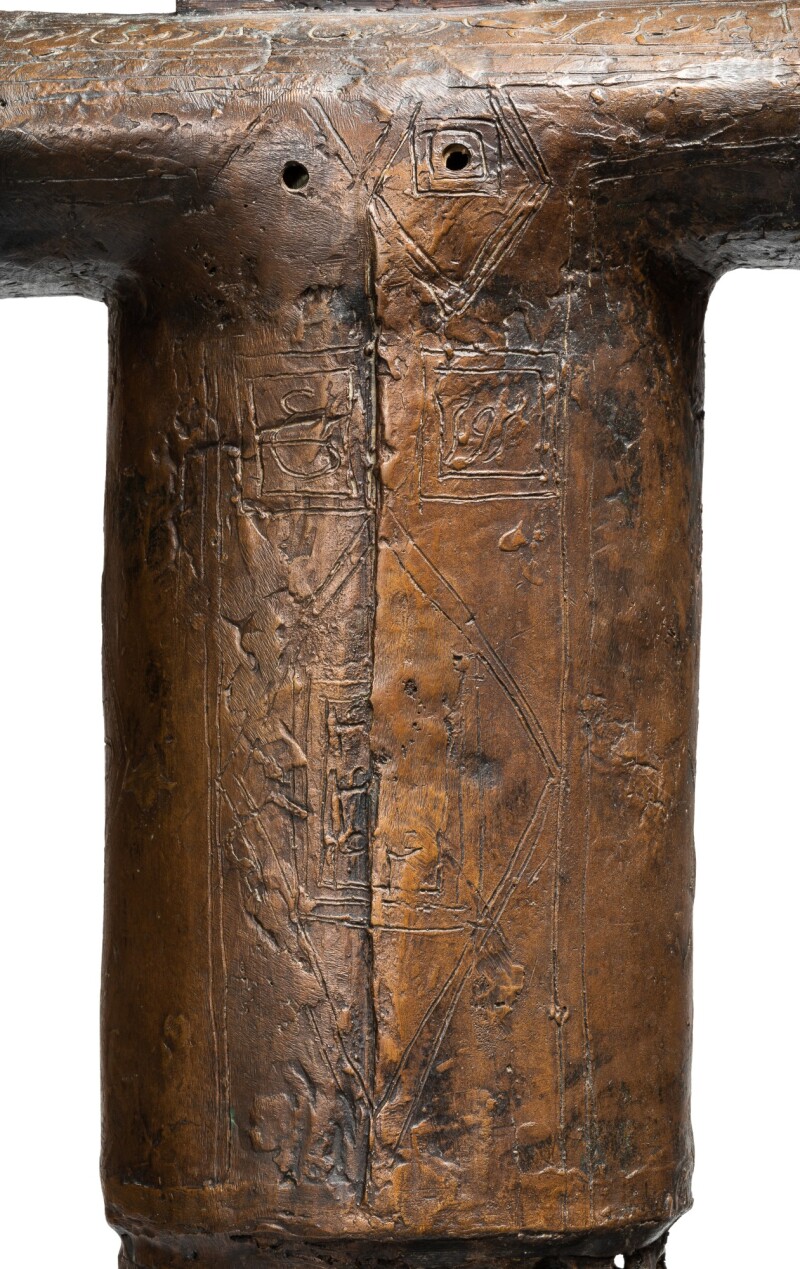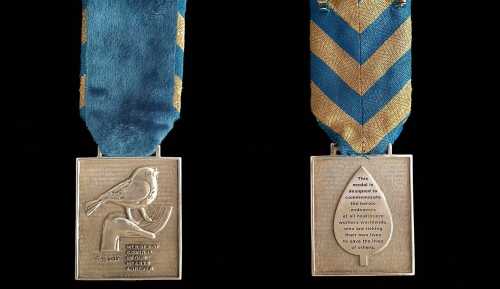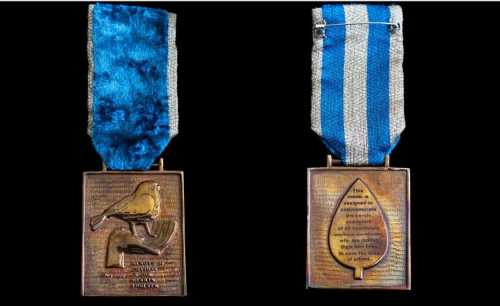- Poet and Pregnant Woman / Poet and the Lover of King 1962
- Bronze set on a wooden base
- Sculpture
- 33 * 10.5 * 55 cm
- titled on identification label on the reversebronze set on wooden base, please note the work is missing one lockWooden base: 9 by 32.5 by 12 cm. 3½ by 12¾ by 4¾ in.Executed in 1962.
23 March 2022
Estimation
£120,000
158,207 USD
-
£140,000
184,575 USD
Realized Price
£189,000
249,176 USD
45.385%
Artwork Description
“It is impossible to write about the history of twentieth-century Iranian culture without commemorating (Tanavoli’s) unparalleled contribution to the arts”
- KAMRAN DIBA, MONOGRAPH P.26
Often referred to as the pioneer of modern sculpture in Iran, Parviz Tanavoli, born in Tehran in 1937, is also an influential collector, teacher, scholar and author. Along a group of other Iranian young avant-garde artists, he sought to challenge artistic traditions in order to emphasize folkloric handicrafts, marking the emergence of the Saqqa-khane movement in the 1960s. As a champion of this new artistic school, Tanavoli explored innovative aesthetics at the root of his culture, its traditions, folklore and myths. His work transcribes everyday objects found in bazaars or shrines into artistic traditional motifs.
“We wanted to be more Persian, so I used all the tools around me: locks, grills. Gradually I created my own anatomy, anatomy for an artist of an Islamic background.”
- TANAVOLI, INTERVIEWED IN THE GUARDIAN, 2016.
Locks, especially, became an “indispensable feature” of his sculptures (Tanavoli 2020), transcending classic interpretation of security or proscription to embody a specifically Iranian dimension of belief, ritual and healing.
Accessible at: https://www.theguardian.com/world/2016/jan/01/parviz-tanavoli-iranian-artist-made-something-nothing
Accessible at: https://www.theguardian.com/world/2016/jan/01/parviz-tanavoli-iranian-artist-made-something-nothing
In fact, Tanavoli gave an important place to the concept of talisman in his work. “Iranians live with talismans,” according to him. “For every illness or obstacle there was always a special one. The makers of talismans acted like psychologists today. People would visit shrines and ask them for help, and they would write a ‘prescription’ — an engraving in copper, brass, or silver.” (quoted in Ditmars, 2020). Typically, this sculpture could be interpreted as a form of good-luck charm for couples, as an omen of healthy pregnancy. In creating an interplay between serious health or philosophical matters and playful absurdity, Tanavoli succeeded in shaping an Iranian visual language relevant specifically to his times.

The artist’s repertoire consisted of a set of recurrent themes including Locks, Cages, and Walls but most notably that of Poets and Lovers.
"Poetry, this oldest companion of mankind, pervades the atmosphere of our land, and the bone that withstands pressure from within to transform energy into motion is invisible to our eyes. (…) What I am exhibiting is a phenomenon, brimful with poetry and the motion of bones from within, which may be observed from the bottom of the holes which I have opened in the body of my bones."
"Poetry, this oldest companion of mankind, pervades the atmosphere of our land, and the bone that withstands pressure from within to transform energy into motion is invisible to our eyes. (…) What I am exhibiting is a phenomenon, brimful with poetry and the motion of bones from within, which may be observed from the bottom of the holes which I have opened in the body of my bones."
- TANAVOLI, QUOTED IN FISHMAN & BALAGHI, 2015, P.12.
Tanavoli’s work plays with the many facets of the poet figure. While fusing his very role of sculptor and that of poet together, he hints at their common quest for perfection and to Sufis’ conception of poets being intermediaries for the love of God on earth. In doing so, he inscribes himself in the lineage of renowned Persian Sufi poets such as Rumi, Hafiz, Omar Khayyam or Saadi (Tanavoli 2020). Meanwhile, his sculptures become an abstract representation of the artist’s emotions and ideals. As such, the present lot demonstrates a deep personal resonance with Tanavoli, in addition of embodying the new pictorial language that revolutionized modern Iranian art in the 1960s.
Tanavoli studied and taught in many influential institutions around the world. In 1961, after a teaching experience in Tehran, he left to teach sculpture for three years at the Minneapolis College of Art and Design. While he worked there, he took part in the Third Minnesota Art Biennial in 1963. To this day, a number of Tanavoli’s Poets & Prophets remain in this state, including in St. John University, Collegeville; the Minneapolis Institute of Arts and the Walker Art Center. The present lot, produced during Tavavoli’s time in Minnesotta, was previously in a local private collection.
Another important early sculpture by Tanavoli was recently on view in London at Frieze's No.9 Cork Street as part of a group exhibition organised by Dastan gallery, Soft Edge of the Blade, which ran from 10 February - 1 March 2022.
https://dastan.gallery/exhibitions/400/
https://dastan.gallery/exhibitions/400/
More lots by Parviz Tanavoli
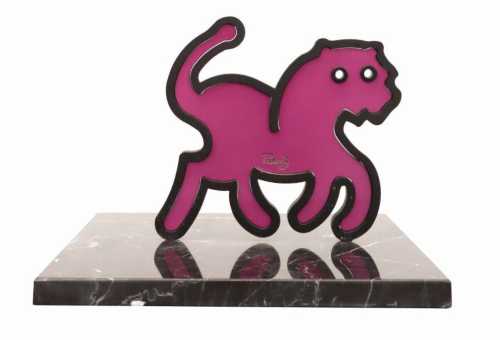
Untitled
Estimation
1,500,000,000﷼
2,481 USD
-
2,000,000,000﷼
3,309 USD
Realized Price
1,400,000,000﷼
2,316 USD
20%
Sell at
Sale Date
Smart Auction
-
2 August 2024
Realized Price
128,001 USD
Min Estimate
68,579 USD
Max Estimate
96,026 USD
Average Artwork Worth
+74.318%
Average Growth of Artwork Worth
Sales Performance Against Estimates
Average & Median Sold Lot Value
2021 - 2025
Performance vs. Estimate
2021 - 2025
Sell-through Rate
2021 - 2025
